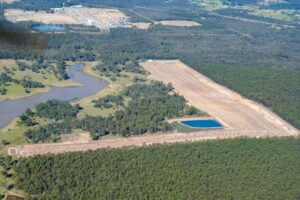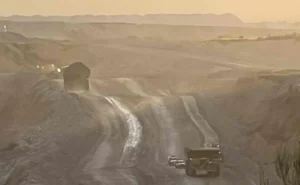Malcolm Turnbull’s dramatic replacement of Tony Abbott as prime minister of Australia has raised hopes of a change in direction for the Coalition government, particularly on climate change and renewable energy, and thereby the shape of its economic future.
 Turnbull promised an end to “policy by slogans”, and a new move to bring the Australian population along with the idea of an exciting future, first of all by explaining what that future might be, and respecting their intelligence.
Turnbull promised an end to “policy by slogans”, and a new move to bring the Australian population along with the idea of an exciting future, first of all by explaining what that future might be, and respecting their intelligence.
But is this all just style and no substance? The next few weeks will tell.
Some are hopeful.
Paul Gilding, author and corporate advisor, describes a collective sigh of relief for those arguing for progressive climate and renewable energy policies.
“For climate advocates PM Turnbull is a “Nixon to China” moment,” Gilding said today. “We will never get on track as a country on this issue without genuine bipartisan support – and because of the way Rudd and Abbott made this a Left/Right issue, only the Liberal Party shifting can deliver the change we need.
“That’s why Turnbull’s arrival as PM is a game changer for Australia’s approach, but the impact will be medium to long term rather than sudden policy shifts. While Abbott had to say he supported action on climate policy, everyone knew he was faking it because the politics demanded he do so.
“Turnbull actually supports climate action and has long understood the economic implications of the transition required. And rather than being fearful of those implications he embraces them – seeing the inherent opportunity in a transition away from coal and towards a technology driven transformation of the energy system.
“The influence of this over time, on the business community and on public attitudes will be long lasting and leave a legacy for a generation.”
Others are not so sure. John Hewson, the former Liberal leader and now champion of fossil fuel divestment campaigns, said Turnbull may well have sold out. “I think it’s all for Malcolm to do right now,” Hewson said on ABC TV’s Q&A program. “The rumour is he’s sold out on climate change, which I personally think is the largest policy challenge – moral challenge, economic, political and social challenge – of this century.”
So what will Turnbull do? Over the next few days, weeks, months, we will find out. But here are eight things he could do right now:
Stop the slogans
This should be the easy part. No more “axe the tax”, no more “climate change is crap”, no more “wind farms are offensive”, no more “coal is good for humanity.” Oh, and don’t replace the slogans with 120-word ones.
Get excited about new technology:
This shouldn’t be too hard, either. Just before the first leadership crisis in February, Turnbull was in California having a test drive of a Tesla Model S, the up-market electric super-car. He raved about the experience: “Tesla has gone from employing 500 people to 11,000 in five years. A reminder of how innovation drives jobs,” he noted on his blog.
“Batteries have the potential to revolutionise the energy market, reducing peaking power requirements, optimising grid utilisation of renewables and in some cases enabling consumers to go off the grid altogether. The excitement of technology in the Bay Area is exhilarating…..but not quite as palpable as the jolt you feel when you hit the accelerator!”
Perhaps he should require all party members to test drive a Tesla. He could just as equally share that enthusiasm, and dump the party’s poisonous rhetoric, about other technologies such as battery storage and renewables. And he should not funnel government funds to daft projects like the rail link for the Galilee Basin coal mines. Even Barnaby Joyce understands that.
Get moving on climate change:
There was a telling moment in Turnbull’s first press conference when the newly designated PM was about to answer a question on emissions reduction targets. Deputy Julie Bishop quickly noted that Australia’s targets were set and would not change. It was a reminder to Turnbull that whatever his own views on climate change, he had to take the party with him.
It is clear that Turnbull has cut a deal with the Far Right rump of the party not to reintroduce an ETS – the very policy mechanism that caused his downfall in 2009. But Turnbull’s own views are very clear. As he said in 2010:
“Climate change is real, it is affecting us now, and yet, right now we have every resources available to us to deal with climate change, except for one, and that is leadership.
“We cannot cost-effectively achieve a substantial cut in emissions without putting a price on carbon.”
Turnbull has the opportunity to provide that leadership. It will take time to introduce a carbon price, but it will most likely come through a baseline and credit scheme, a sort of emissions reduction fund and safeguards mechanism with bite, and amendments to the current proposal. Reputex goes into more details here.
Sweep out the dead wood:
Turnbull may be constrained by promises made to the Right Wing, but he can change the rhetoric and the mood, and the vision, by sweeping away the inner cabal that fashioned Abbott’s policy making.
This includes the likes of climate deniers such as Maurice Newman, Dick Warburton, David Murray and Tony Shepherd, and shake the Cabinet from the grim grasp of the Institute of Public Affairs and its policy wish-list. The right wing commentariat – including Alan Jones, Ray Hadley, Tim Blair and Andrew Bolt voiced their anger. They will be sniping at every turn.
That generational change is also needed elsewhere, particularly in the energy industry where many of the incumbent utilities, and policy and pricing regulators – from the industry minister Ian Macfarlane down – are from the “old school” of energy management, and don’t seem to get the concept of decentralised generation, and the exciting technologies that Turnbull has alluded to, including EVs (such as his affection for Tesla), solar, and battery storage, and the smart software that will pull these technologies together.
Remove the threat to dismantle CEFC, ARENA and the CCA:
If only Bernie Fraser had hung around for another week. The chairman of the CCA resigned last week, apparently frustrated by his inability to get his voice heard, even by environment minister Greg Hunt. Yet the CCA should play a critical role in advising on climate change policies.
Ditto the Clean Energy Finance Corporation and the Australian Renewable Energy Agency. Both have committed to playing a large role in the imminent roll-out of utility-scale solar, yet have been hamstrung in their broader goals by funding cuts in the case of ARENA, and restricted mandates in the case of the CEFC (Abbott’s instruction not to invest in wind farms or rooftop solar).
Both agencies have been operating with the threat of closure looming behind them. With a positive mandate, both can play a critical role in the bringing in and lowering the cost of the technologies that Turnbull is so excited about.
Express support for renewable energy, and boost the target:
Tony Abbott, Joe Hockey and others in the Coalition made it very clear, they don’t like renewable energy, and they hated wind energy. That has caused the investment drought to continue, despite the reduced 33,000GWh target that was supposed to provide certainty, and turned large investors like Meridian Energy to greener shores. Turnbull should be able to turn that antipathy on a dime, simply by expressing support for new technologies.
Turnbull has been an enthusiastic supporter of renewable energy. Way back in 2010, he even attended the launch of BZE’s Zero Carbon plan for 2020, along with Bob Carr and the Greens’ Scott Ludlam. Turnbull was particularly supportive of solar thermal with storage.
“As you know the great challenge with renewable sources of energy; solar and wind in particular, is that they are intermittent,” he told the event. “So what do we do when the sun isn’t shining and the wind isn’t blowing. How do we store that power.
“There is the ability with concentrated solar thermal power stations to use the sun’s energy to superheat a substance, in this case molten salt, that will hold its heat for long enough to be able to continue to generate steam and hence energy after the sun has stopped shining or during or day after day of rain. So there is a real opportunity there, with that technology, to generate baseload power from solar energy – something of a holy grail.”
Given that experience, maybe Turnbull should pitch for 100 per cent renewables? It is probably too much to expect Turnbull to lift the current renewable energy target in the short term, but that is exactly what he needs to do. The industry needs a long term policy, and Turnbull will be under pressure to match Labor’s 50 per cent renewable energy target by 2030, which even big investment banks say is readily achievable. Rooftop solar needs ongoing regulatory support as well, and it fits Turnbull’s rhetoric about a new economic future.
Impose emission standards on coal generators, and efficiency standards on cars
Whatever his support for the current policy, Turnbull cannot duck the fact that Australia’s industrial emissions are growing, and particularly in the energy sector. Short of a carbon price, Turnbull could follow the lead of the US and China and impose strict emissions limits for coal-fired generators, impose energy efficiency targets for vehicles, and reintroduce the efficiency standards for new homes. Designing an exit strategy for coal generators is one of the most urgent issues.
Find a new environment minister, or tell Greg Hunt to stop saying silly things:
Greg Hunt likes to tell people how hard it was to push a progressive line in an Abbott government. Many people wondered how hard he tried. Hunt came up with some of the Abbott government’s worst whoppers on climate change, coal, and renewable energy.
Turnbull cannot afford to have such rhetoric repeated under his leadership, so if Hunt stays in that office (and we will find out at the end of the parliamentary sitting week) the former Australian universities debating captain will have to be given another topic to argue: Decisive climate change is good for the economy and will not bankrupt Australia.










